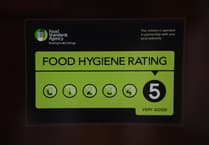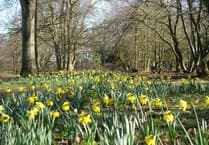WOKING voters will have the chance to give their verdict on the first year of the Liberal Democrat administration when they go to the polls next month.
The Woking Borough Council elections on Thursday 4 May are the first since the dramatic results last year that gave the Lib Dems a controlling majority over the Conservatives, who had been in charge for decades. It gave the Lib Dems 16 seats, the Tories eight, Labour three and the Independents three.
Every year, one of the three seats in each of the 10 wards is up for election. This year those seats are held by four Conservatives, four Lib Dems, one Labour and one Independent.
The Conservatives will be hoping to at least reduce the number of seats held by the Lib Dems, who will seek to consolidate or improve their hold.
Both parties have candidates in all 10 wards, as do Labour, who will hope that the party’s strong polling across the country will help them to extend beyond their traditional Canalside stronghold.
But Mohammad Ali, one of the three Labour councillors for that ward, is among five councillors standing down this year. In 2019, the last election for these seats, Cllr Ali had a slim 206 majority over the Conservatives, who will be hoping to achieve their long-held ambition of taking a seat in Canalside. The Tories have occupied the county council seat that covers the area for 10 years.
Ayesha Azad, the Conservatives’ former borough council leader, is standing down in Heathlands, where she had a 886 margin over the Lib Dems in 2019. The Tories will be looking to avoid their defeat in the ward last year when Cllr Azad’s deputy, Simon Ashall, saw his 1,077 majority overturned by the Lib Dems after just four years on the council.
The other retiring councillors are the Conservatives Colin Kemp in Horsell and Gary Elson in Pyrford, while the Lib Dem James Sanderson is standing down in Goldsworth Park.
The retirement of councillors, with first-time candidates often standing to replace them, can lead to surprising results.
The Green Party are hoping widespread concerns about the environment will increase their support and are fielding candidates in all 10 wards for the first time, up from six last year and seven in 2021.
The other side of the political divide is represented by the Heritage Party, made up mostly of former Ukip supporters. They have three candidates, who will be seeking to give a voice to those who feel ignored by the other parties.
The Independents, who generally support the ruling Lib Dems, have two candidates, including one for the Conservative seat in Knaphill, where they defeated a Tory last year.
The main local issue is the council’s debts, while the effectiveness of its services and the effects of the town centre development are also big factors.
The national political picture, which almost certainly influenced the results last year, will also play a part with the Lib Dems, Labour, the Greens and Heritage all hoping to benefit from any anti-government feelings. The three bigger parties are also trying to play their part having an effect on the next general election. Their cause is not helped by the fact that voters have chosen a Conservative MP by a large margin since the constituency was created in 1950.
Campaigning over the next few weeks will have a different feel.
For the first time in many years, Woking Lib Dem candidates and volunteers will have to promote their actions in power and explain why they should continue to run the council while the Conservatives will be criticising the administration’s decisions and offering changes.
The verdict will be delivered in time-honoured fashion by a cross made with a stubby pencil.




